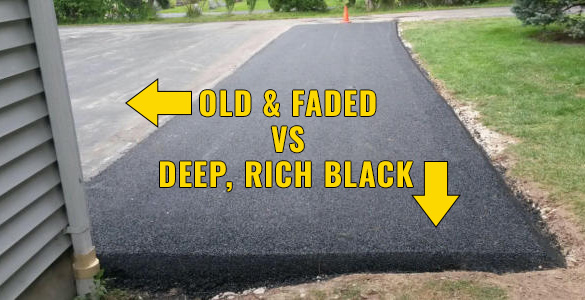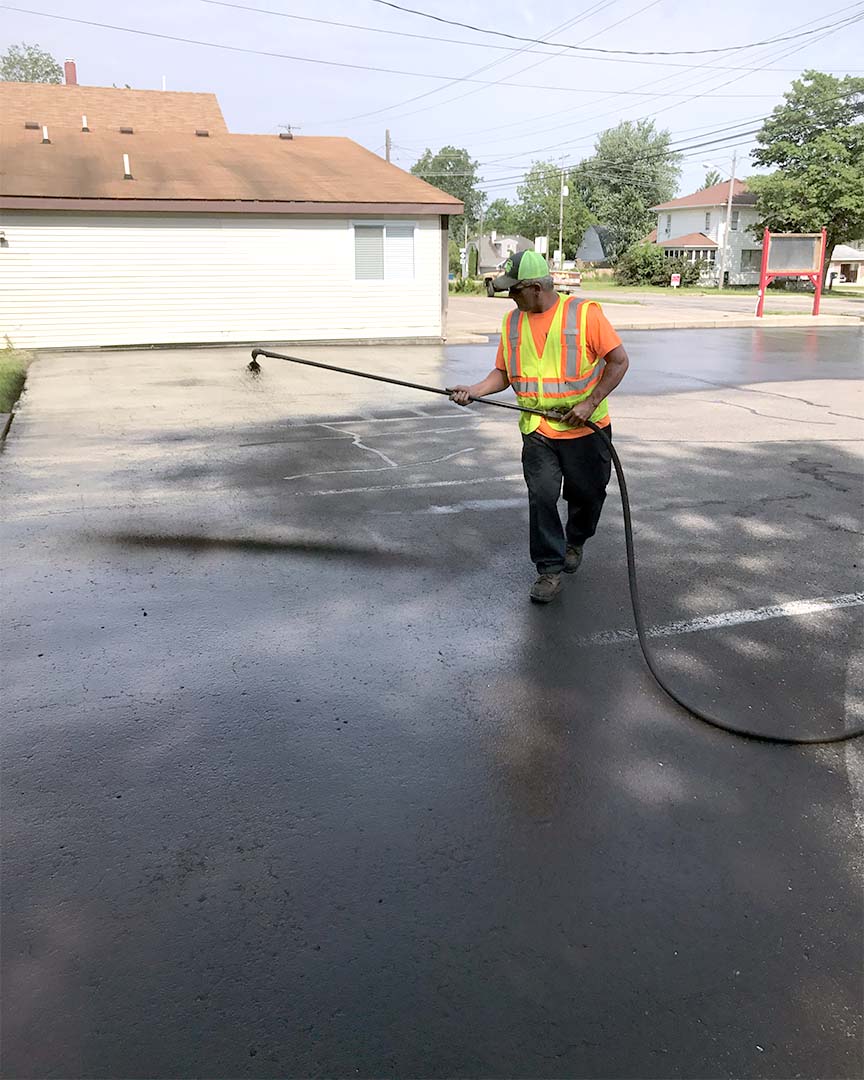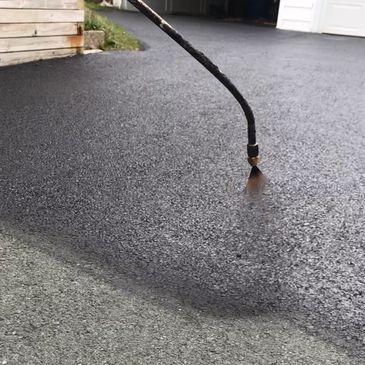Renew Your Residential Property with Regrading and Asphalt Sealing Techniques
Wiki Article
Hot Mix Asphalt: A Sustainable Solution for Pavement
Warm Mix Asphalt (HMA) has emerged as a leading lasting selection for sidewalk options, supplying a myriad of ecological benefits and cutting-edge innovations. As the demand for eco-friendly building and construction practices grows, checking out the nuances of HMA's sustainability can give important understandings into the future of pavement solutions.Ecological Benefits of Warm Mix Asphalt

Additionally, Hot Mix Asphalt aids to minimize urban warm island results. Its dark color soaks up sunlight, reducing the amount of warm mirrored back into the atmosphere contrasted to lighter-colored pavements. This can decrease ambient temperatures in metropolitan locations, decreasing the demand for air conditioning and eventually decreasing power consumption.
Furthermore, Warm Mix Asphalt adds to improved stormwater administration. Its porous nature enables water to reenergize and penetrate the sidewalk groundwater products, minimizing runoff and the threat of flooding. These environmental advantages make Hot Mix Asphalt a lasting selection for leading roadways and freeways.
Energy Efficiency in HMA Production
Is energy effectiveness a crucial element in the production of Warm Mix Asphalt (HMA)? Definitely. Power plays a substantial duty in the production of HMA, impacting both cost and environmental sustainability. One vital element of energy efficiency in HMA production is the usage of cozy mix asphalt (WMA) innovations (commercial parking lot paving). WMA permits the blending and placement of asphalt at reduced temperatures compared to typical hot mix asphalt, causing lowered power consumption throughout production. This process not only lowers fuel usage yet additionally reduces greenhouse gas discharges, making it a much more ecologically friendly alternative.In addition, innovations in plant innovations have caused more energy-efficient HMA manufacturing processes. Modern plants are created with attributes like recycled asphalt pavement (RAP) processing abilities, efficient heater systems, and improved insulation, all adding to energy cost savings. By optimizing power usage in HMA manufacturing, the industry can minimize its carbon impact while preserving top quality sidewalk materials. Power efficiency is, as a result, an essential factor to consider in making sure the sustainability of Warm Mix Asphalt production.
Recyclability of Warm Mix Asphalt
The recyclability of Warm Mix Asphalt (HMA) is an essential aspect of its sustainability and long-lasting ecological impact. HMA is one of the most recycled materials in the United States, with over 100 million lots of recovered asphalt pavement (RAP) being reused every year in new pavement building and construction. Recycling HMA provides a number of ecological advantages, such as minimizing the need for virgin products, lowering power usage throughout production, and decreasing the quantity of waste sent to landfills.The procedure of recycling HMA includes milling the existing sidewalk, crushing it into smaller pieces, and mixing it with new accumulation and asphalt binder to produce a recycled mix. This recycled mix can typically do along with and even much better than traditional HMA, while requiring fewer raw materials and producing lower greenhouse gas exhausts. By incorporating RAP right into brand-new pavement tasks, road firms can conserve natural deposits, minimize costs, and lessen the environmental impact of road building and maintenance tasks. Overall, the recyclability of HMA plays a considerable role in advertising sustainable methods within the pavement market.

Long-Term Performance of HMA
Asphalt sidewalks show durability and durability over a prolonged duration, mirroring the long-lasting efficiency of Warm Mix Asphalt (HMA) Additionally, innovations in HMA More hints technology, such as the usage of polymer-modified binders and cozy mix asphalt, have better boosted the sturdiness and long life of HMA pavements. By prioritizing high quality building and construction and upkeep practices, HMA proceeds to show itself as a cost-efficient and lasting service for resilient pavement infrastructure.
HMA: Sturdiness and Sustainability
Showing both sturdiness and sustainability, Warm Mix Asphalt (HMA) has actually become a foundation in the construction of resilient sidewalk frameworks - hot mix asphalt. HMA's resilience comes from its capability to stand up to heavy lots, extreme climate problems, and high website traffic quantities, making it a dependable option for roadways, freeways, and flight terminal runways. The make-up of HMA, which typically includes accumulations, binder, and filler, plays a crucial role in boosting its longevity and resistance to tear and wear
Additionally, HMA's sustainability hinges on its recyclability and energy-efficient manufacturing procedure. The capacity to reuse recovered asphalt pavement (RAP) in brand-new HMA mixes minimizes the need for virgin products and lessens the ecological effect of sidewalk building and upkeep. Additionally, the energy effectiveness of generating HMA hinges on its reduced blending temperature levels compared to other pavement products, leading to decreased power intake and greenhouse gas exhausts.
Verdict
In conclusion, warm mix asphalt (HMA) provides a sustainable solution for sidewalk with its environmentally pleasant characteristics. HMA's recyclability, power efficiency in manufacturing, and long-lasting durability make it an environment-friendly selection for road building.
HMA is one of the most recycled products in the United States, with over 100 million heaps of recovered asphalt sidewalk (RAP) being reused each year in brand-new sidewalk building and construction.The process of recycling HMA involves grating the existing sidewalk, crushing it right into smaller sized items, and mixing it with new aggregate and asphalt binder to produce a recycled mix.Asphalt pavements show longevity and resilience over an extensive period, showing the long-term Visit Your URL efficiency of Warm Mix Asphalt (HMA) Furthermore, advancements in HMA modern technology, such as the use of polymer-modified binders and click here to read warm mix asphalt, have actually better boosted the sturdiness and durability of HMA sidewalks. The capability to recycle recovered asphalt sidewalk (RAP) in brand-new HMA mixes minimizes the need for virgin materials and minimizes the ecological impact of sidewalk building and construction and upkeep.
Report this wiki page